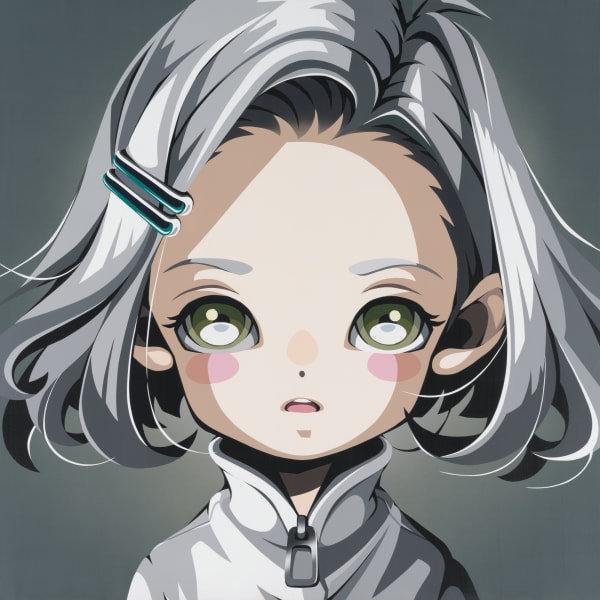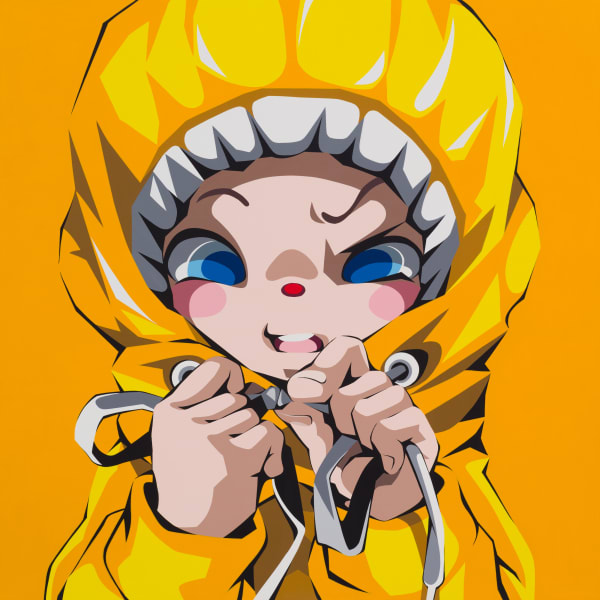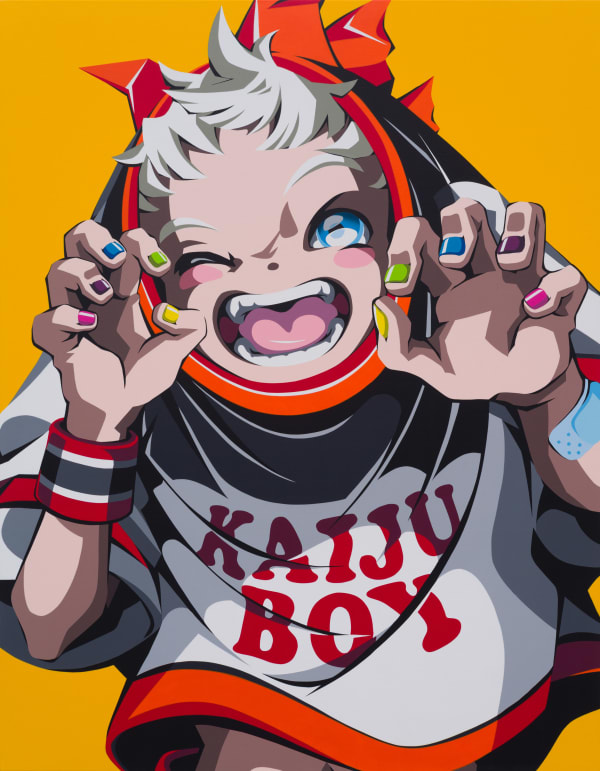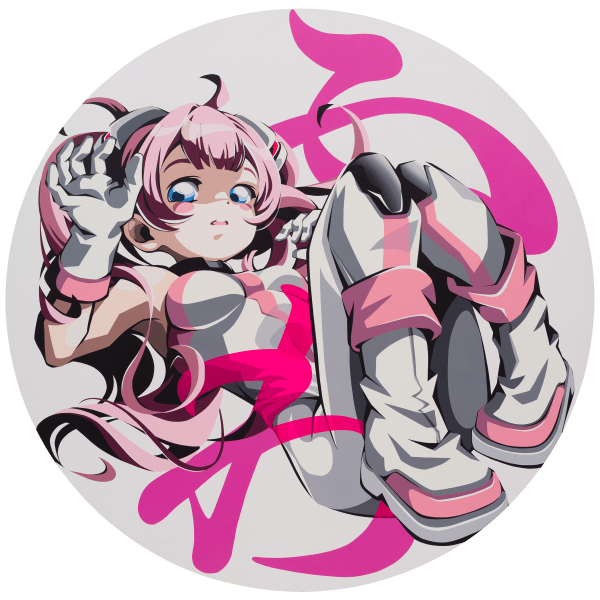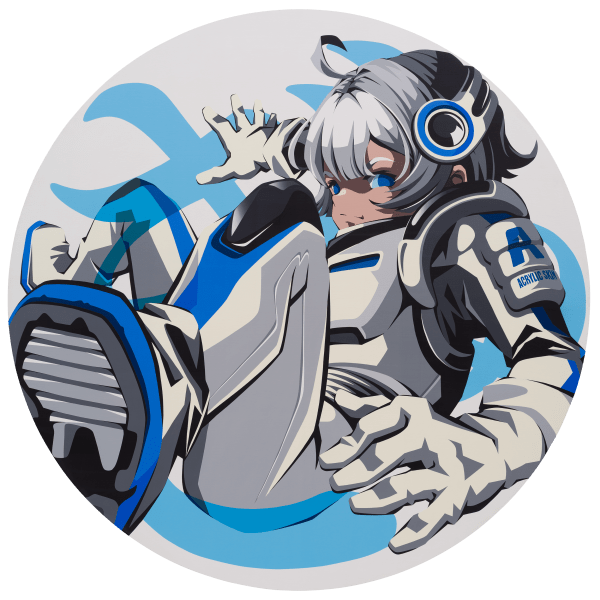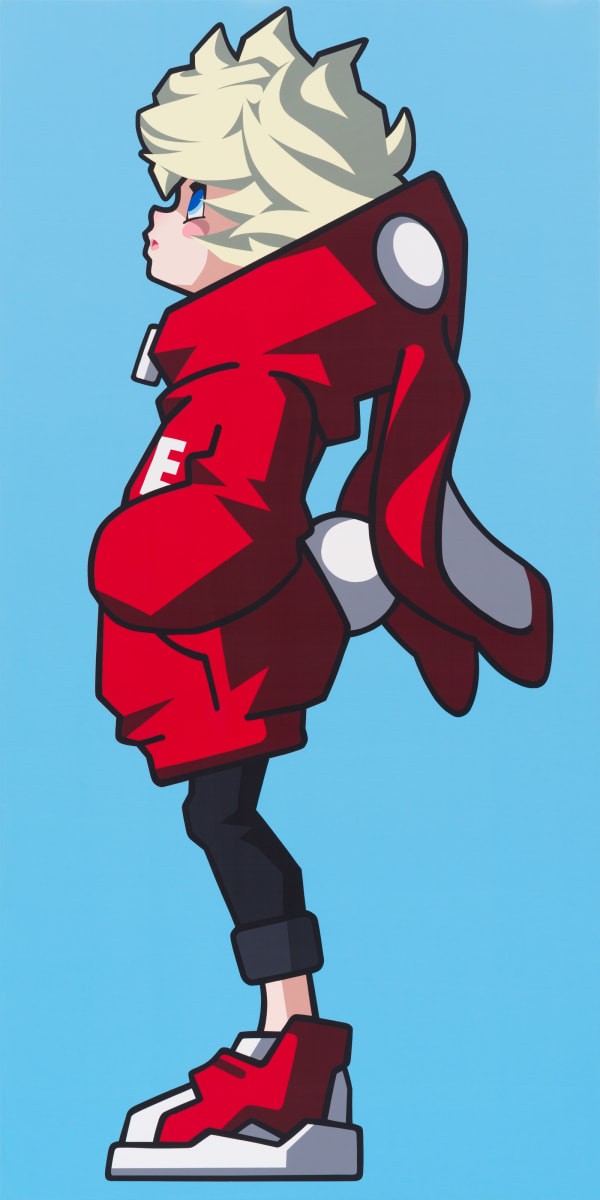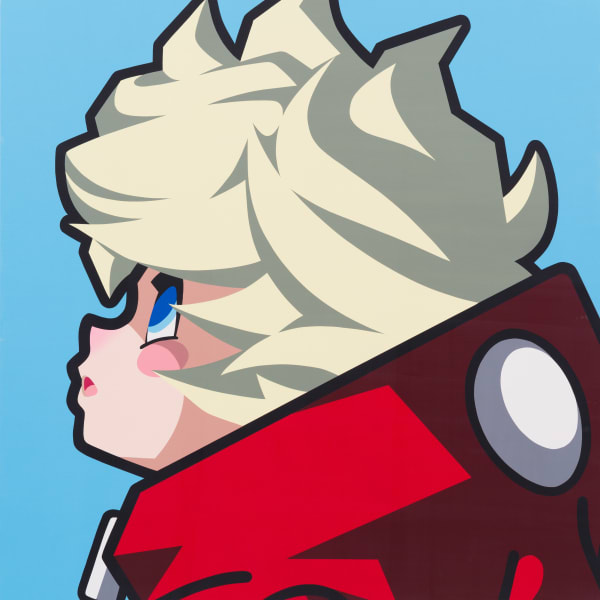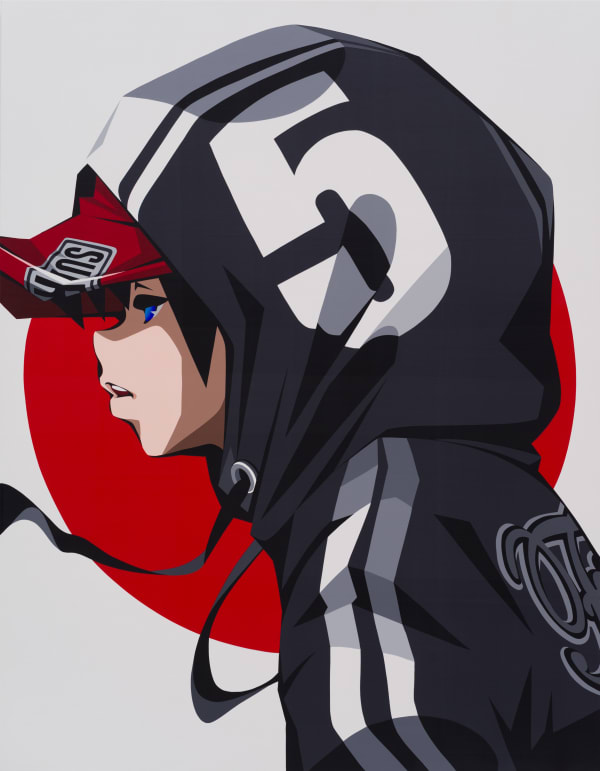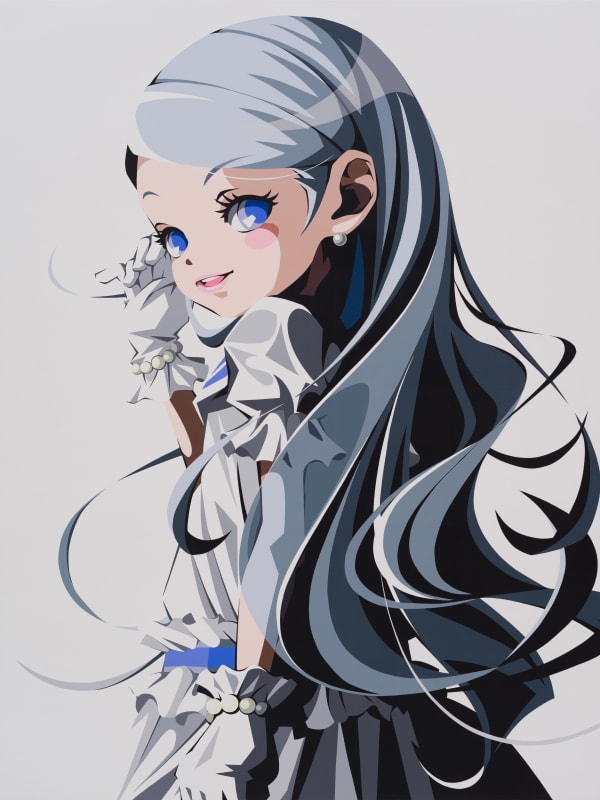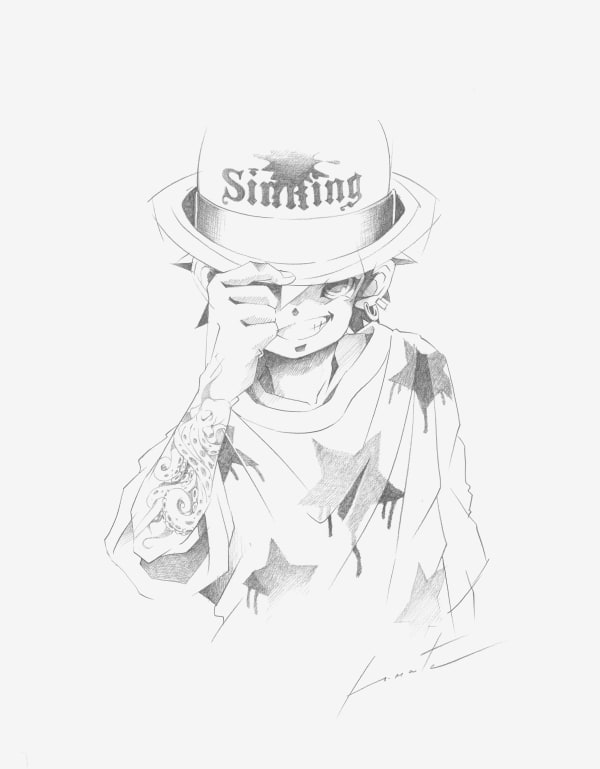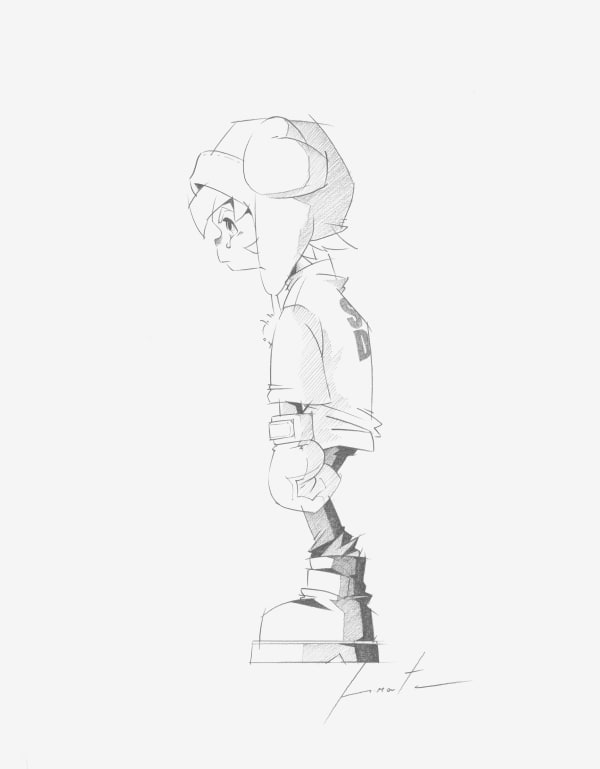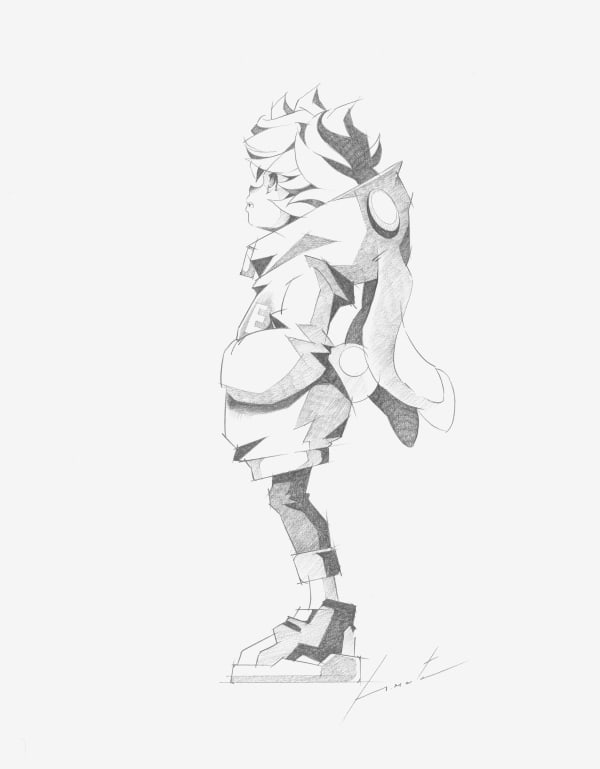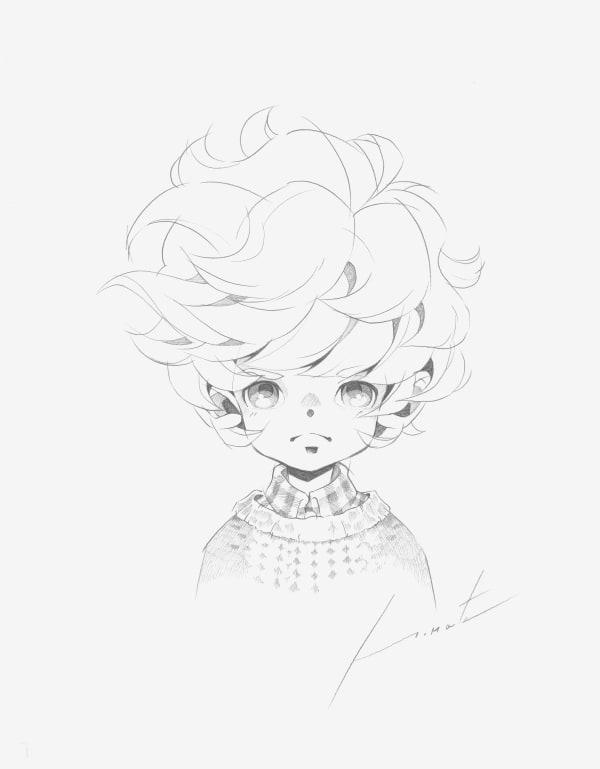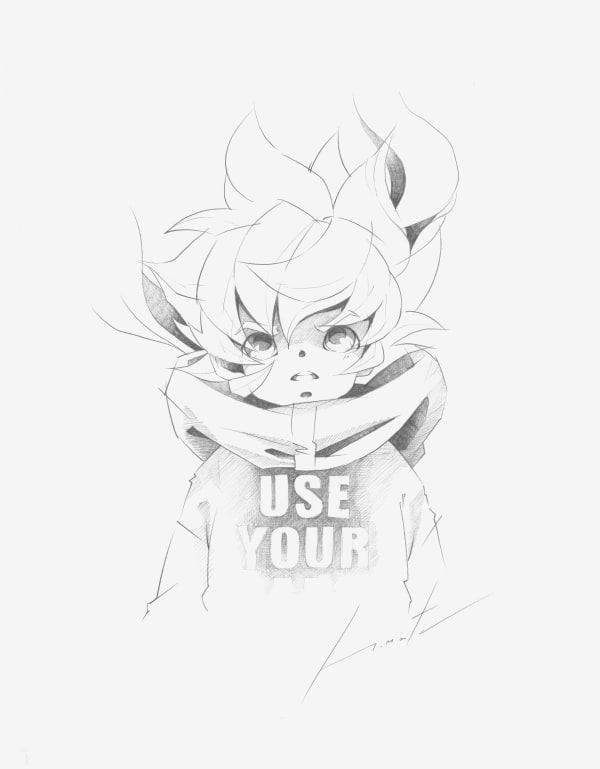-
In August 2025, Hiroyuki MATSUURA returns for his fourth solo exhibition at ESLITE GALLERY, once again embarking on a visual journey that blurs the boundaries between virtual and reality, tradition and modernity, through his signature manga-inspired characters and distinctive two-dimensional aesthetic. Renowned for his mastery in using manga and anime vocabulary to craft compelling visual narratives, he unveils a new triptych titled GIGA, inspired by Japan’s national treasure Chōjū-jinbutsu-giga (Scrolls of Frolicking Animals and Humans). The piece serves both as a tribute to traditional Japanese painting and as a daring experiment in reimagining and reconstructing manga within a contemporary art context.
-
GIGA—Rooted in Tradition, Reimagined for the Present
Hiroyuki MATSUURA drew inspiration from Chōjū-jinbutsu-giga Scroll I, one of the most iconic examples of anthropomorphized animals in the history of Japanese painting. This celebrated scroll depicts satirical and humorous scenes of interaction between rabbits, frogs, and monkeys. On selecting this reference, MATSUURA shared: “While preparing for my overseas solo exhibition, I wanted to choose a visual element deeply rooted in Japanese culture that could also resonate with a global audience—something that aligns with the manga-inspired style I’ve been exploring for over two decades.” He believes that manga did not suddenly emerge in modern times, but is rather a continuation of a thousand-year tradition in Japanese painting, one defined by two-dimensional perspectives and linear aesthetics. To him, Chōjū-jinbutsu-giga represents the very origin of this visual lineage.
Images below: Chōjū-jinbutsu-giga (Scroll I, detail), late Heian period (circa 12th century), housed at Kōzan-ji Temple in Kyoto, Japan. (Source: Kōzan-ji Temple official website)
-
“This time, I chose to focus on the two-dimensional elements of Chōjū-jinbutsu-giga—the very roots of Japanese manga—and attempted to create an audacious composition that reflects how contemporary manga expressions have evolved from this legacy.”
-

松浦浩之 Hiroyuki MATSUURA
鳥獸 GIGA Choju-GIGA, 2024壓克力顏料、金箔/畫布 Acrylic and gold foil on canvas
195 x 390 cm, set of 3NT$ 5,600,000 -
“I wanted to boldly incorporate extreme perspective, flames, dynamic line work, and other expressive techniques into this piece. These elements, tracing back from Chōjū-jinbutsu-giga to ukiyo-e, have shaped the visual language and evolution of manga.”
-
For subtitle please tap "CC" icon at the bottom right of the video player.
-
Character Concept - Children Who Never Grow Up, with Worldly-Wise Eyes
The boys and girls in Hiroyuki MATSUURA’s works often possess an ambiguous sense of age that defies easy categorization. When asked whether these characters echo Peter Pan, he replied, “As a child, I did feel a vague unease about ‘growing up,’ but in the end, it seems I never truly crossed the line from ‘child’ to ‘adult.’” This elusive and transcendent character concept adds a captivating tension between innocence and maturity, making his creations hard to look away from. Referred to by MATSUURA as having “Super Acrylic Skin,” these characters are not mere anthropomorphic forms, but they stand before viewers with confident self-awareness and equal footing.
-
Hiroyuki MATSUURA draws inspiration from both literature and music. His work Happy Prince reimagines The Happy Prince fairy tale by Oscar Wilde, which he translates through his own distinctive visual vocabulary. Blowin’ in the Wind pays homage to Bob Dylan’s iconic song of the same name, expressing his concern over the ongoing conflicts that trouble the world nowadays.
-
-
“Kaiju (monsters) was a special term when I was a kid, and somehow, without realizing it, it had already become known worldwide. I chose kaiju as a keyword to capture the essence and spirit of childhood.”
-
Rolling Text - Speech Bubbles
-
“I’ve always admired Western English font design, but over time, I came to realize that the Oriental aesthetics of Japanese typography are also held in high regard around the world.
These two pieces feature hiragana characters filling circular canvases, where the text and the font design seamlessly merge in a way that evokes the look and feel of speech bubbles in Japanese manga.”
-
Design and Structure - PICTO Series
The PICTO series, along with the reinterpretation of the classic character Windy Bunny, showcases MATSUURA’s sharp sensitivity to line work and visual logic. He describes himself not as an artist who relies on intuition and improvisation, but as one who prefers to create detailed sketches beforehand and approaches his work with design-like precision.
With flat, thick black outlines and minimalist color schemes, these visual elements draw from both manga and design—qualities that Hiroyuki MATSUURA has skillfully reintegrated into contemporary art. As he once said, “I am fascinated by the unequivocal clarity of mathematical equations, where black is black and white is white.”
-
-
The Virtual and the Real - The Soul’s Eye in the Metaverse
Five and Pearl are works originating from virtual characters created by Hiroyuki MATSUURA in the metaverse, where characters evolve beyond static images to become virtual beings, complete with expressions and body movements. MATSUURA stresses that even within the virtual world, a character’s actions ultimately reflect the humanity of its creator. The virtual realm is merely a tool, while the soul remains grounded in reality. That’s why these virtual characters are not only creative mediums but also mirrors through which the artist can project themselves and reflect on others.
-
Installation views
-
Character Creation - Pencil Sketch
-
-
Windy Bunny 2022 is based on Windy Bunny, originally created in 2007.
Times have changed dramatically. Back then, it was still too early for manga to be considered an art form, as it is today, but now manga and design elements have come to play a significant role in contemporary art.Windy Bunny is a symbol of my work, and it reminds me that through my works I am confronting such things. Even 16 years later, the image of standing firm against the wind remains unchanged.
This work represents my own “way of living in this world.”
-- Hiroyuki MATSUURA
-
For Hiroyuki MATSUURA, this exhibition carries a special significance. Eighteen years ago, in 2007, he held his first overseas solo exhibition at ESLITE GALLERY. His most recent exhibition in Taiwan was in 2020 during the pandemic. Although he couldn’t attend in person then, he still deeply felt the warmth and support from the Taiwanese audiences. This summer finally marks a long-awaited return to face-to-face interaction with a brand-new exhibition. He enthusiastically shared, “If this exhibition can convey the joy I’m feeling right now to the viewers, that will be my greatest happiness.”
In the ever-evolving landscape of contemporary art, Hiroyuki MATSUURA’s work reminds us that art is not a lofty pursuit but a form of expression deeply rooted in cultural memory and everyday imagination. He wields manga vocabulary as his brush and technological tools as his aids to continually portray a heartfelt way of seeing the world.
Hiroyuki MATSUURA:SUPER ACRYLIC SKIN - GIGA
- Opening: August 2, 2025 (Sat.)丨3-5pm
- Date: August 2–September 27, 2025
- Address: ESLITE GALLERY∣B1, No. 88, Yanchang Rd., Xinyi Dist., Taipei City 110055, Taiwan (eslite spectrum Songyan Store)
- Opening Hours: 11am-7pm, Tuesday – Saturday (closed on Sunday and Monday)








